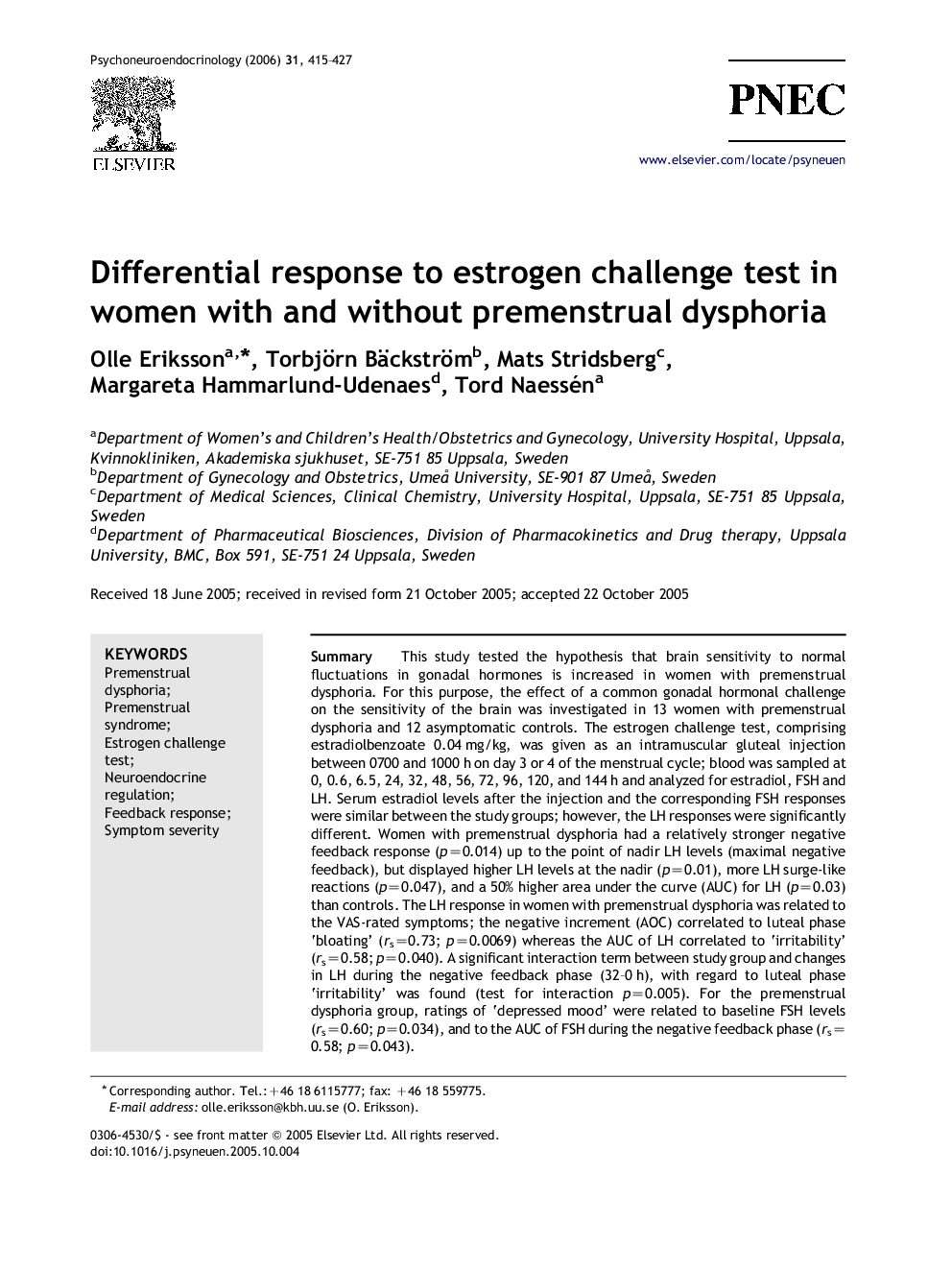| کد مقاله | کد نشریه | سال انتشار | مقاله انگلیسی | نسخه تمام متن |
|---|---|---|---|---|
| 337267 | 547485 | 2006 | 13 صفحه PDF | دانلود رایگان |

SummaryThis study tested the hypothesis that brain sensitivity to normal fluctuations in gonadal hormones is increased in women with premenstrual dysphoria. For this purpose, the effect of a common gonadal hormonal challenge on the sensitivity of the brain was investigated in 13 women with premenstrual dysphoria and 12 asymptomatic controls. The estrogen challenge test, comprising estradiolbenzoate 0.04 mg/kg, was given as an intramuscular gluteal injection between 0700 and 1000 h on day 3 or 4 of the menstrual cycle; blood was sampled at 0, 0.6, 6.5, 24, 32, 48, 56, 72, 96, 120, and 144 h and analyzed for estradiol, FSH and LH. Serum estradiol levels after the injection and the corresponding FSH responses were similar between the study groups; however, the LH responses were significantly different. Women with premenstrual dysphoria had a relatively stronger negative feedback response (p=0.014) up to the point of nadir LH levels (maximal negative feedback), but displayed higher LH levels at the nadir (p=0.01), more LH surge-like reactions (p=0.047), and a 50% higher area under the curve (AUC) for LH (p=0.03) than controls. The LH response in women with premenstrual dysphoria was related to the VAS-rated symptoms; the negative increment (AOC) correlated to luteal phase ‘bloating’ (rs=0.73; p=0.0069) whereas the AUC of LH correlated to ‘irritability’ (rs=0.58; p=0.040). A significant interaction term between study group and changes in LH during the negative feedback phase (32–0 h), with regard to luteal phase ‘irritability’ was found (test for interaction p=0.005). For the premenstrual dysphoria group, ratings of ‘depressed mood’ were related to baseline FSH levels (rs=0.60; p=0.034), and to the AUC of FSH during the negative feedback phase (rs=0.58; p=0.043).Women with premenstrual dysphoria displayed a gonadotrophin reponse to estradiol challenge that differed from that of controls, and was correlated to symptom severity.
Journal: Psychoneuroendocrinology - Volume 31, Issue 4, May 2006, Pages 415–427